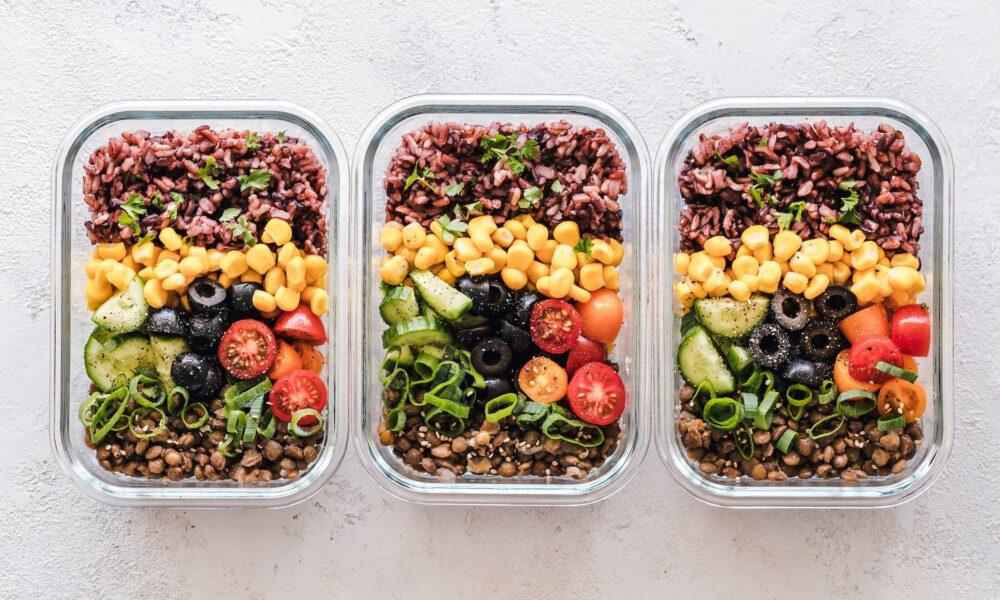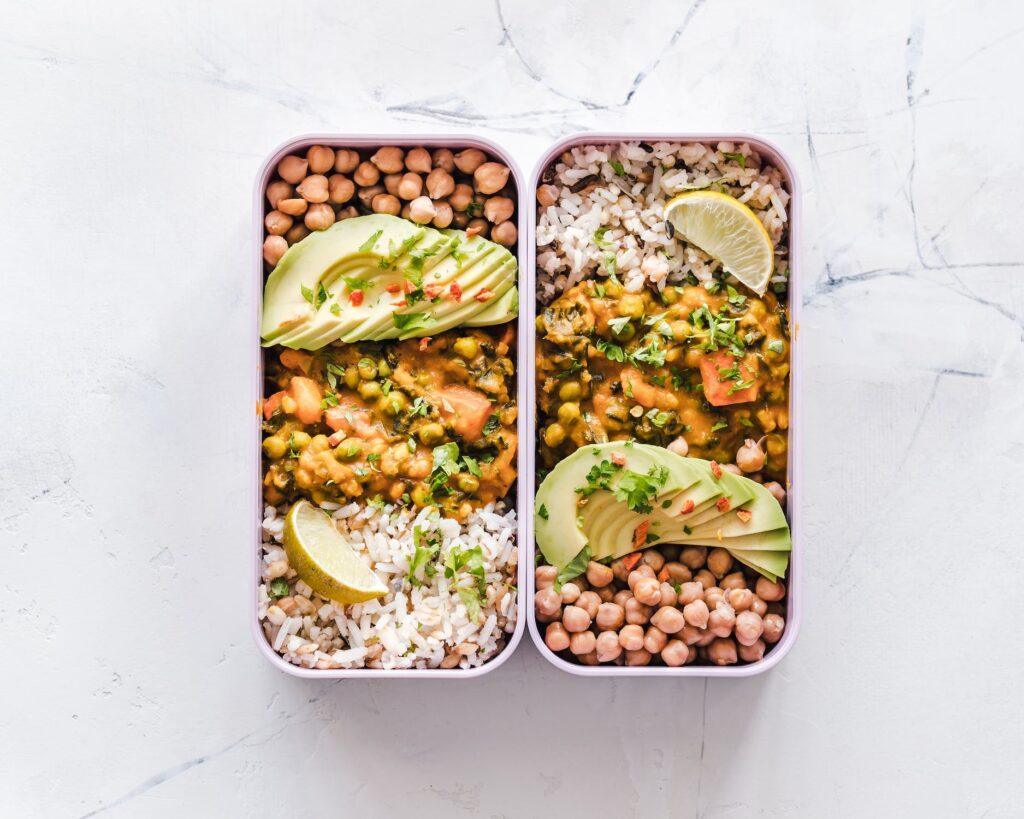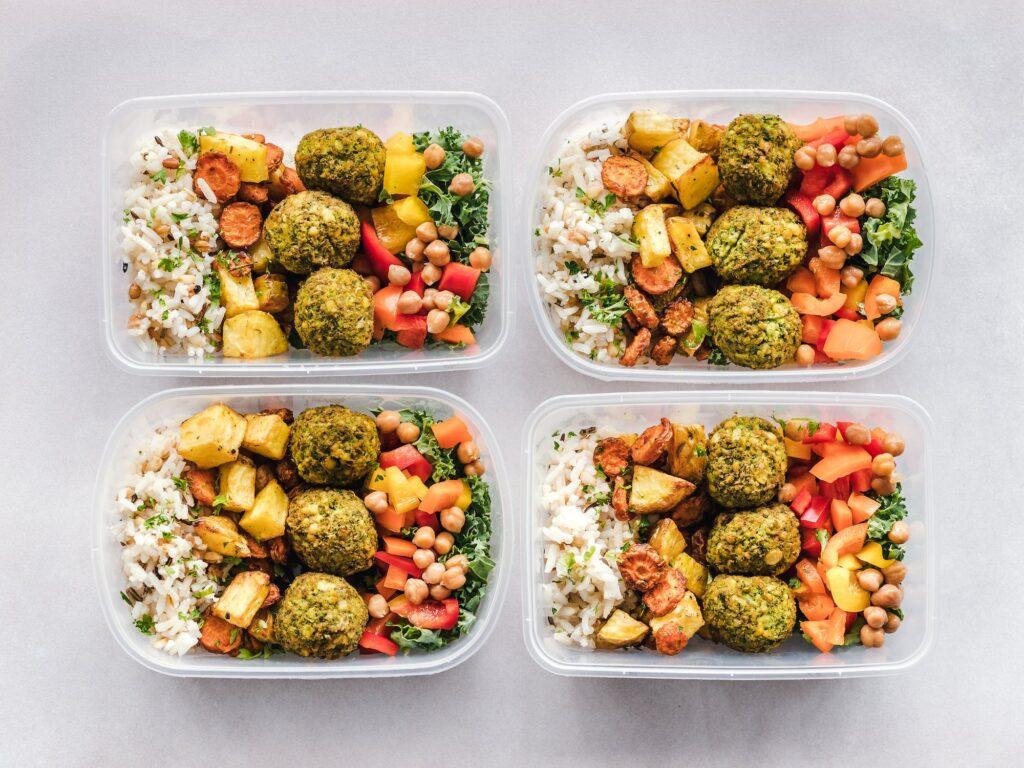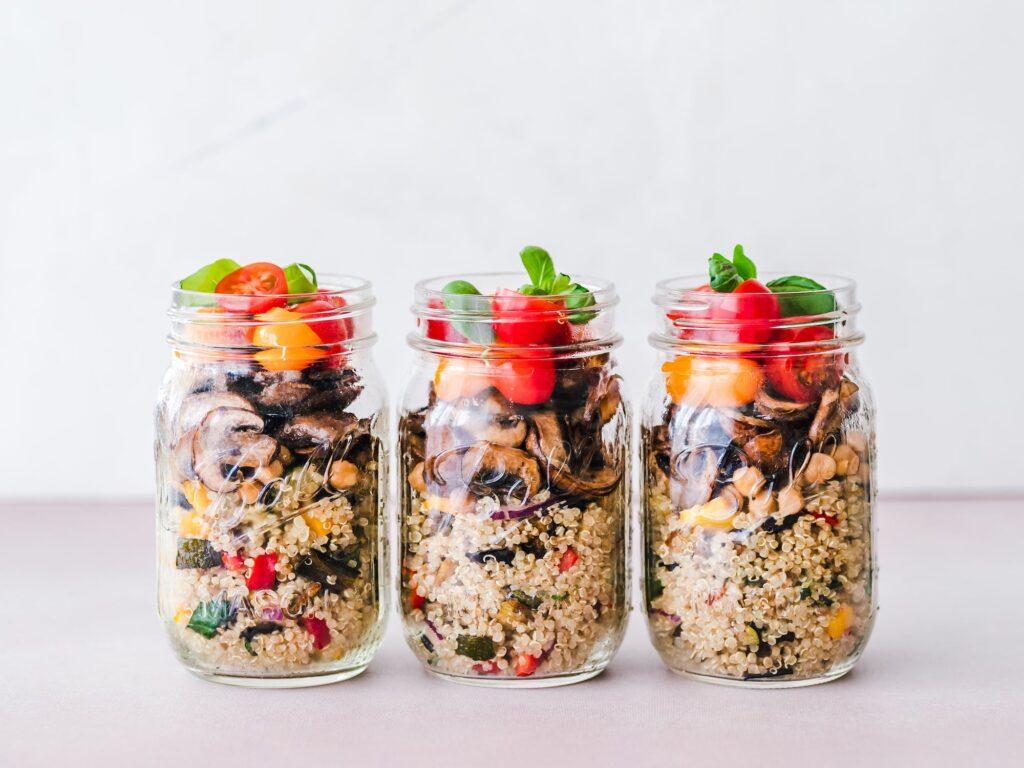

If you want to have healthy meals without spending time cooking and money on takeouts and dining, try meal-prepping your food! It is a strategic and proactive approach to planning and preparing meals in advance.
Meal prepping is a practical solution for individuals seeking a healthier, more organized lifestyle. This guide explains what meal-prepping is, its benefits, the foods to meal prep, how to get started with meal prep, and the steps involved.
What is Meal Prepping?
Meal prepping is a proactive approach to planning and preparing meals in advance and then dividing them into portions to be eaten later. For instance, preparing lunch meals on the weekend for the next seven days and portioning them out. Instead of cooking or buying chunky food, you just grab and eat what you have already prepared.
Meal prepping is popular among those with busy schedules, fitness enthusiasts, and anyone looking to maintain a balanced and nutritious diet. It saves time because you don’t have to cook after coming from the gym or work, makes you plan your meals. By planning them, you can make healthier choices.
Meal Prepping Benefits
Below are six reasons why you should start meal prep. These reasons include the following:
1. Meal Prep Saves Time
Imagine coming home from the gym and realizing that you have 45 minutes to prepare and go to work, yet you are hungry and have no ready food to eat.
While it could take 15-20 minutes to cook even a quick meal, you can warm up your meal prep in 2 – 3 minutes so you can eat and keep moving! Meal prepping eliminates the need to cook from scratch daily, saving time on meal preparation during busy days.
2. Meal Prep Saves Money
Meal preps save you money because instead of dining out, you buy ingredients in bulk and cook in larger quantities to reduce the need for frequent dining out or ordering takeout.
Take-out food adds up over time and your typical food choices are unhealthy.
3. It Contributes to a Healthy, Balanced Diet
Most takeout meals are calorie-laden. When you are hungry, you are more likely to eat a large portion. This may contribute to weight gain or increased belly fat, hindering your fitness goal, especially to lose weight or have a visible six-pack.
Planning and preparing meals in advance, as in the case of meal prep, allows you to create balanced diets that include a mix of macronutrients (protein, carbohydrates, and fats) and micronutrients (vitamins and minerals).
This balanced approach helps satisfy hunger, control cravings, and supports overall health.
4. Portion Control
When you order food, you are likely to eat all the portions since you paid for it, even if it’s more than what you usually eat at home.
Meal prep allows portioning of meals during the prepping process, which helps control the portion sizes you eat, preventing overeating and supporting weight management goals.

What Foods Can I Meal Prep?
You can meal prep foods to suit your fitness goals, dietary preferences, nutritional needs, and taste preferences. Here are some categories of foods that are commonly included in meal prep:
1. Proteins
- Chicken stir
- Lean ground turkey or beef
- Roasted salmon or other fish
- Tofu or tempeh for vegetarian or vegan options
- Hard-boiled eggs
2. Carbohydrates
- Quinoa
- Brown rice
- Farro
- Sweet potatoes or regular potatoes (roasted or baked)
- Whole wheat or multigrain pasta
- Oats with fruits and nuts
- Whole grain pancakes or waffles
3. Vegetables
- Roasted or grilled vegetables (such as broccoli, cauliflower, bell peppers, zucchini)
- Lentils (green or red lentils)
- Steamed or sautéed greens (spinach, kale, Swiss chard)
- Raw vegetables for salads or snacking (carrots, cucumber, cherry tomatoes)
- Stir-fried mixed vegetables
4. Legumes
- Cooked and seasoned beans (black beans, chickpeas, kidney beans)
- Hummus for dipping or spreading on wraps
5. Healthy Fats
- Avocado slices or guacamole
- Nuts and seeds (almonds, walnuts, chia seeds)
- Olive oil or vinaigrette for salads
6. Dairy or Dairy Alternatives
- Greek yogurt
- Cheese (sliced, grated, or cubed)
- Cottage cheese

How to Get Started with Meal Prep and Steps Involved
Below are five steps of meal prepping:
1. Decide the Types of Foods for Meal Prep
While selecting the foods, consider your nutritional needs, dietary preferences, the eating meals you want to streamline cooking (breakfast, lunch, dinner, snacks), and any specific fitness or health goals you may have.
If your fitness goal is to build muscles, consider balancing macronutrients (proteins, carbohydrates, and fats) with proteins occupying most of your meal. For instance, you can choose vegetables, lean proteins, and healthy fats.
Once you are done with meal selection, make your menu or meal ideas to guide your grocery shopping and meal preparation. The menu should be simple to save time, with meals structured around seasonal produce.
2. Determine Your Prep Method
There are various meal-prepping methods you can choose from, depending on the foods you plan to meal prep. Decide on the method of meal preparation that suits your lifestyle and preferences. Common methods include:
Make-ahead -Meal
This meal prep method serves those with little time to prepare meals during the week. Here, you cook your meal in advance so that when mealtime comes, you only reheat it instead of cooking from scratch. For instance, meal preparing a soup for weeknight dinners.
Individually Portioned Meal
This approach involves dividing larger quantities of cooked or prepared food into single-serving portions and storing them to be eaten later. It is suitable for those who prefer grab-and-go meals since they have no time to cook and those with health goals, such as bodybuilders looking to add lean muscles.
Component Meal Prep
Component prep, also known as ready-to-cook, is where you cook individual ingredients that can be combined in different ways to cook throughout the week. For instance, instead of chopping onions, chills, and peppers daily, you prepare them in advance on a single day.
Batch Cooking or Freezing
Batch cooking and freezing involve cooking larger quantities of food at once and then portioning it for storage for later use. This approach is useful when you have busy schedules and are looking to save time on daily cooking or are interested in having convenient, ready-to-eat meals available.
The techniques of meal preparation are also essential when meal prepping. Consider cooking techniques such as grilling, roasting, baking, steaming, or sautéing based on your chosen foods.
3. Choose a Day for Meal Prepping
Many people prefer to meal prep on weekends when they have more time, but if weekends don’t work for you, select a day that works best for your schedule.
You should select that day by considering the shelf life of the foods you’re preparing and plan accordingly. If some items you need have a shorter shelf life, meal prep the day you shop. So after shopping, you immediately begin cooking.
4. Go shopping
Now that you’ve created your shopping list using the types of food you’ve selected and the method of meal prep you want, it’s time to go shopping for the food ingredients and storage containers.
With your detailed shopping list, buy all the ingredients you need, considering quantities for the number of servings you intend to prepare. You can buy foods like quinoa, whole grains, precooked chicken sausage, eggs, brown rice, olive oil, and onions.
Purchase a variety of containers suitable for storing different types of foods. Choose containers that are airtight, leak-proof, and microwave-safe for reheating.
5. Prepare and Store
Once you’ve prepared the ingredients, begin cooking.
After cooking, allow the cooked food to cool before storing it to prevent condensation, which can affect the quality of stored food. Portion the meals into the selected meal prep containers labeled with the date of preparation for easy tracking.
Store meals in the refrigerator for short-term use or in the freezer for longer-term storage; organize your refrigerator or freezer with the oldest meals at the front for easier rotation.
Be mindful of the recommended storage times for different types of food to maintain freshness and safety. Vegetables like onions and peppers packed in airtight containers can stay two to three days a refrigerator before going bad, while heartier veggies like winter squash and chopped carrots will stay a little longer.
Foods like cooked seafood, poultry, grains, and meat should be consumed within four days, and ensure they are reheated at 165℉ before eating.

Conclusion
Meal prepping streamlines cooking by optimizing time, minimizing decision-making, saving time and effort, and contributing to more consistent and healthier eating habits.
While meal prepping can be a valuable tool in weight control, it should be combined with other healthy lifestyle habits, including regular physical activity and mindful eating practices.
Additionally, individual dietary needs vary, so it’s advisable to consult with a healthcare professional for personalized guidance based on your specific goals and health status.




















You must be logged in to post a comment Login